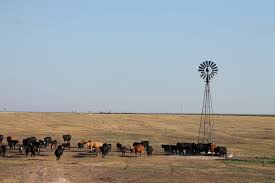Derrell S. Peel, Oklahoma State University - Lessons to be Learned from the Last Big Drought.
Around the time of the drought of 2012, the closure of a major beef processing facility in the Texas panhandle in 2013 made dramatic changes in the beef industry. Similar to the drought being faced by beef producers today, the beef herd capacity numbers were down significantly during that time and had to be rebuilt in the years following.
“The packing industry in this country, most of that infrastructure that we rely on for the bulk of our slaughter was built in the 70s and 80s- early 80s,” Peel said. “That was a time period when we had 20 to 25 million more head of cattle than we do today, just from the long-term adjustments in the industry.”
There was chronic excess capacity in that industry, Peel said, and most producers today cannot remember a time when that wasn’t the case.
“That is what made that such a change,” Peel said. “We had closed a couple of plants earlier, but that last plant that closed at Plainview in 2013 really brought the total capacity down to a level where we were in a drought and we bottomed in 2014; the expansion that followed that- by 2016 to 2017, cattle numbers were back up enough where now, for the first time maybe ever, we were really bumping up against that slaughter capacity,”
Some lessons can be learned from the rebuilding in that 2014 to 2015 time period, Peel said, and the 2023 cattle numbers from USDA say that inventory is smaller than it needs to be.
“We are not sure yet whether the drought is over, so we are not sure exactly when we start this process of rebuilding, but it is going to happen if not in 2023, then after that,” Peel said.
Peel said he expects to see cattle prices go much higher than anticipated and because of the general trends, those prices should be higher than they were following the last big drought.
“How much higher is a different question, but they also didn’t stay up there very long,” Peel said. “You know, you have to have those prices to jump-start that expansion. They didn’t stay too long, and you know, when you look at the female market, cow and heifer prices went phenomenally high, we bought those cows, and then it turns out that we couldn’t pay for them. The market didn’t really stay long enough to pay for them.”
Smaller beef numbers being produced domestically, Peel said, is going to imply rationing some beef through the domestic market through higher prices, more beef imported, and fewer exports.
“We had record level beef production in 2022, but we built that record production on the backs of liquidation,” Peel said. “So, it is not a sustainable thing. So, we know that beef production is going to fall starting in 2023, probably for the next two or three years at least.”
Things like cow slaughter, Peel said, which have been elevated for the past two years, are going to drop sharply with implications for the ground beef market in particular.
“We are going to see some differences in these trade flows that will help supplement the market here in one way or another,” Peel said.














